Knowde Enhanced TDS
Identification & Functionality
- INCI Name
- Cosmetic Ingredients Functions
- Technologies
Features & Benefits
- Benefit Claims
- Labeling Claims
- Performance Benefits
- Excellent foaming behavior – various attributes of foam volume, cushion, bubble size and body
- High foam stability with low foam decay
- Mild yet deep pore cleansing to remove dirt, sebum, and makeup from skin
- Improves foam properties in combination with anionic surfactants
- Gentle to hair fibers with efficient build-up removal for cleansing hair/scalp
- Mildness for daily cleansing of skin and mouth
- Low irritation potential for skin and eyes
- Dermatologically and clinically tested
- Formulation Benefits
- Stable in a broad range of pH and applications.
- Non-ionic, compatible with a wide range of personal care materials.
- Cold processable, easy to use and water soluble.
- Does not contain preservatives.
- Suitable for a wide range of rinse-off applications.
- Key Benefits
- High foam volume, equal to SLES
- Medium-large bubble size
- Excellent foam body
- Lowest foam decay
- High cleansing ability
- Superior hair color maintenance vs. SLES
Applications & Uses
- Markets
- Applications
- Bath & Shower Applications
- Hair Care Applications
- Oral Care Applications
- Personal Hygiene Applications
- Skin Care Applications
- Wipes, Tissue & Towel Applications
Properties
- Appearance
- Cloudy, light yellow viscous liquid
- Typical Properties
| Value | Units | Test Method / Conditions | |
| Active Matter | 48 - 52 | % | - |
Regulatory & Compliance
- Certifications & Compliance
Technical Details & Test Data
- Irritation and Mildness Data
Skin Compatibility:
- BASF’s APG surfactants not only show very low irritation potentials under use conditions, they also cause less skin dryness and skin barrier damage than conventional surfactants.
- This further confirms the excellent suitability for skin rinse-off formulations, where mildness is key.
Soap Chamber Test: TEWL on Day 5
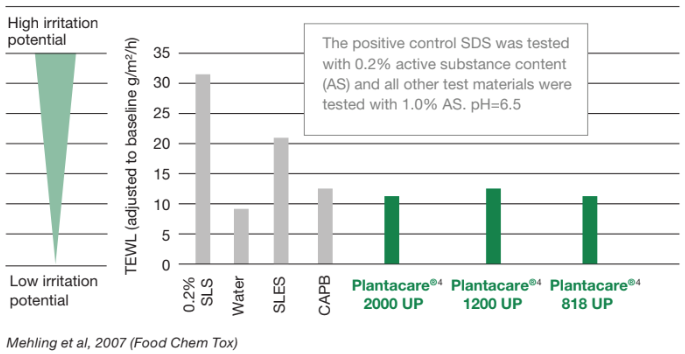
- The soap chamber test (SCT) is used to evaluate the cumulative irritation potential of surfactants. Parameters assessed also give a measure of possible surfactant- induced skin dryness and skin barrier damage (TEWL).
- Surfactants were repeatedly applied to the volar forearm under occlusion on 5 consecutive days and skin dryness was assessed on day 5; skin barrier damage on day 8.
Soap Chamber Test: Dryness on Day 8
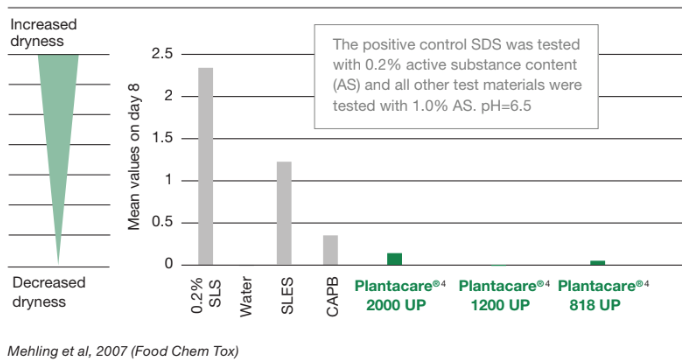
Epicutaneous Patch Test (2% AS, pH 6.5), Single Occlusive Application (24 h)
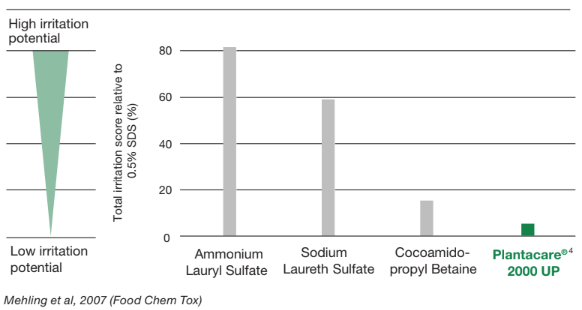
- Primary skin irritation is assessed in humans using epicutaneous patch testing (ECT; 24 h occlusive patch test).
- In an ECT, substances are applied to backs of volunteers under occlusion for 24 h; reactions (redness/ erythema, scaling/squamation, swelling/edema, cracking/fissuration) are monitored for 3 days following removal of the patch.
- Sensorial and Thickening Data
Foamability:
Plantaren® 2000 N UP synergies in combination with BASF surfactants result in a high rate of foaming (mm/s), also known as foamability.
Test parameters:
- Amount of foam: Amount of foam after two pumps
- Foam cushion: Feel of the cushion, pillow, film between the fingers
- Bubble size: Pore/bubble size and spread
- Foam stability: Stability, how fast the bubbles burst
- Creaminess: Feel of creaminess between the fingers
- Foam body: Assessment of the sturdiness / plasticity of the foam
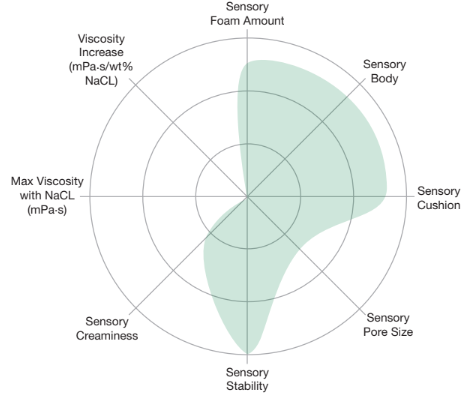
Foam Performance of Single Surfactants: Plantaren® (100%) vs. SLES (100%) and Dehyton® PK 45 (CAPB) (100%):
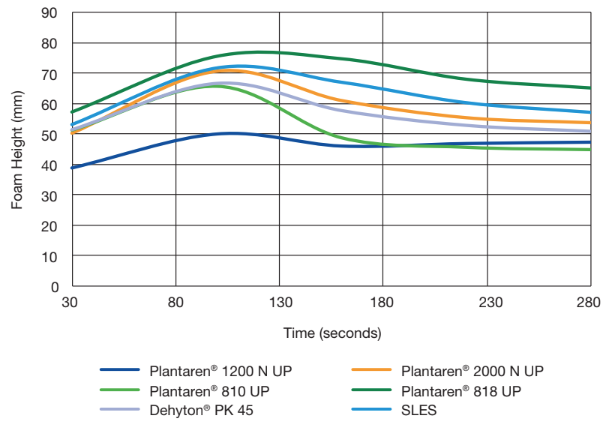
Description Label Ratio Naturalness (%)** Rate of foaming (mm/s) Dehyton® PK 45
Plantapon® ACG 50
Plantaren® 818 UPA 17
66
1794% 0.37 Jordapon® SCI
Plantaren® 1200 N UPB 25
7597% 0.36 Plantaren® 818 UP
Plantapon® ACG 50
Texapon® SFAC 33
33
33100% 0.35 Dehyton® PK 45
Plantaren® 2000 N UPD 25
7592% 0.35 Texapon® SFA
Plantaren® 1200 N UP
Plantapon® ACG 50E 66
17
17100% 0.35 Jordapon® SCI
Plantaren® 810 UPF 50
5093% 0.33 Dehyton® PK 45
Texapon® N 70G 25
7573% 0.31 **Note: Naturalness % is based on renewable carbon content
Foam Performance of Plantaren® Synergies vs. CAPB:SLES (25:75):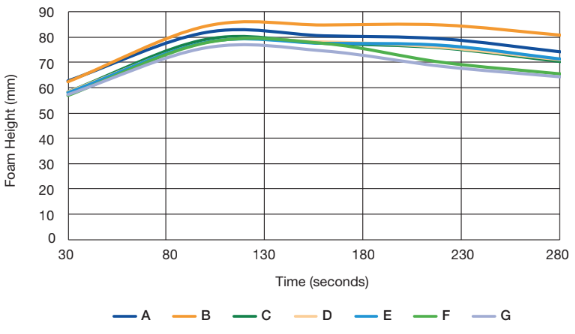
Packaging & Availability
- Country Availability
- Regional Availability


